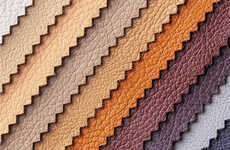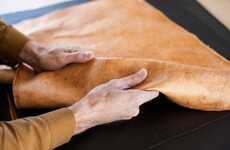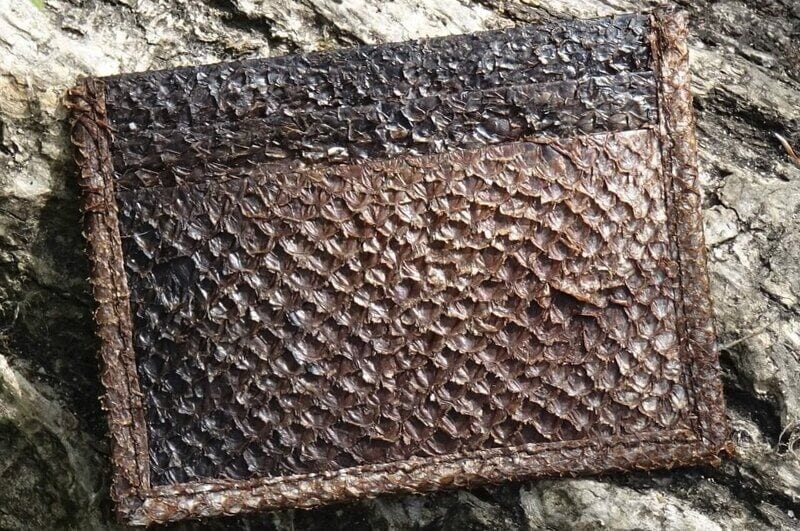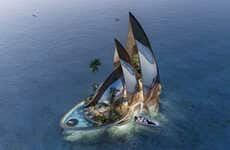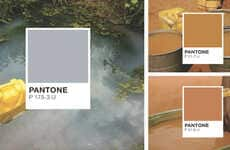
Fish Leather Made from Salmon is a Sustainable Alternative
Elena Rahman — March 24, 2022 — Eco
References: felsie & yankodesign
Felsie, otherwise known as Antonia Gillett, designed fish leather as an alternative to traditional leather materials. To create the material, the designers first rescue fish skins that are otherwise destined for the trash. The leather is dyed using bark tanning to uphold its sustainability.
Dubbed the Felsie Fish Leather, the material is long-lasting and resembles the texture and pattern of snakeskin leather at first glance. Consumers can be reassured by the fact that the material does not smell fishy; instead, it smells similar to other genuine leather. The current manufacturing technique produces a rough texture, but Felsie's team is sure to smooth out the process after further developments. The material can be shaped into various items, like wallets, belts, and more.
Image Credit: Felsie
Dubbed the Felsie Fish Leather, the material is long-lasting and resembles the texture and pattern of snakeskin leather at first glance. Consumers can be reassured by the fact that the material does not smell fishy; instead, it smells similar to other genuine leather. The current manufacturing technique produces a rough texture, but Felsie's team is sure to smooth out the process after further developments. The material can be shaped into various items, like wallets, belts, and more.
Image Credit: Felsie
Trend Themes
1. Sustainable Leather Alternatives - The growing demand for sustainable fashion has created opportunities for innovative alternatives to traditional leather materials, such as fish leather.
2. Upcycling Waste Materials - Felsie's use of discarded fish skins for leather highlights the potential for upcycling waste materials into valuable products.
3. Natural Dyeing Techniques - Felsie's use of bark tanning to dye fish leather showcases the potential for natural and sustainable dyeing techniques in the fashion industry.
Industry Implications
1. Fashion and Accessories - The fashion industry can benefit from the development of sustainable leather alternatives, such as fish leather, for the production of accessories like wallets and belts.
2. Environmental Sustainability - Felsie's focus on upcycling waste materials and using natural dyeing techniques demonstrates opportunities for innovative sustainability practices in industries beyond fashion.
3. Fishing and Seafood - The use of discarded fish skins for leather production introduces opportunities for the fishing and seafood industry to repurpose waste material and create additional revenue streams.
5.2
Score
Popularity
Activity
Freshness




